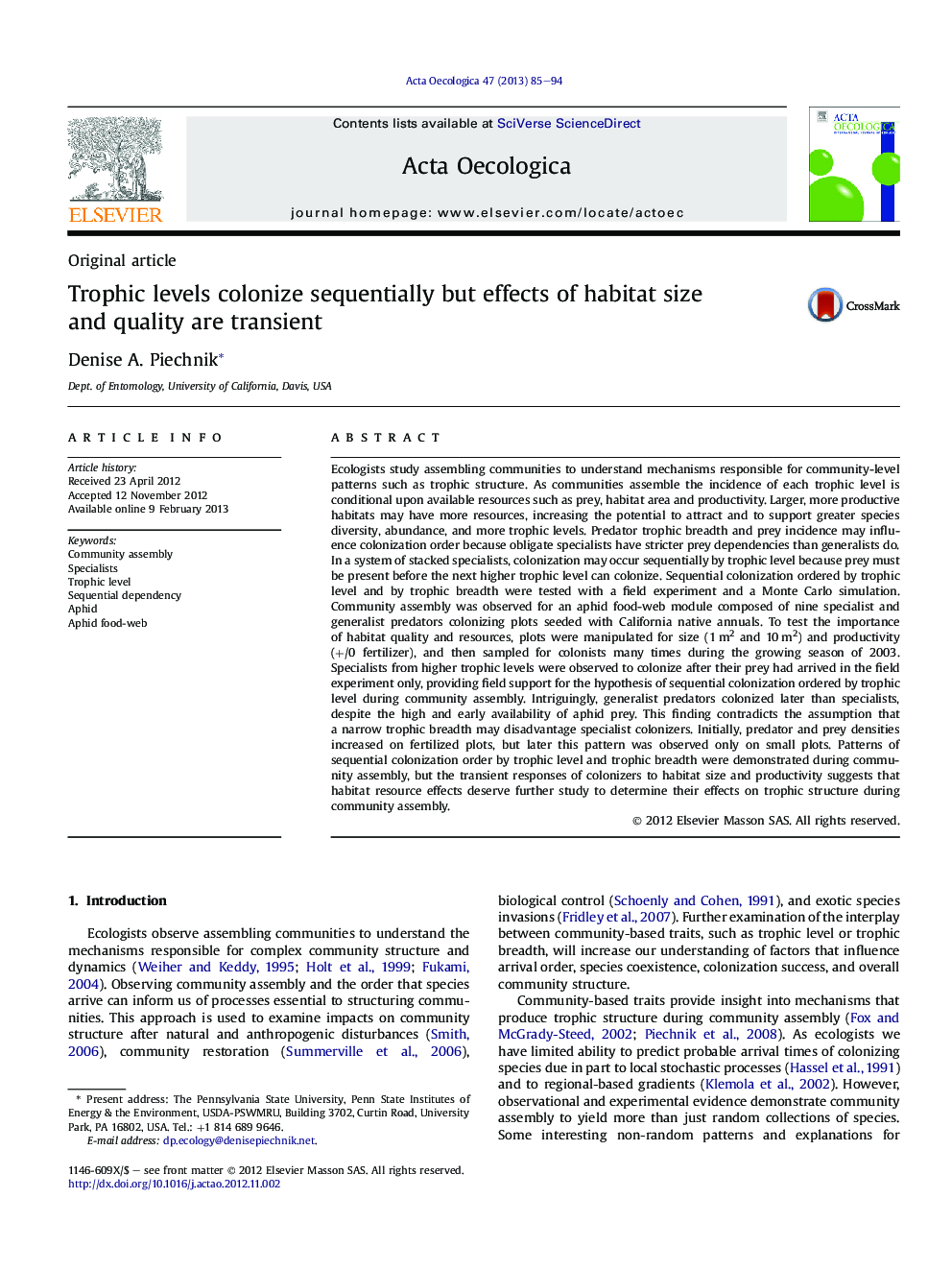| Article ID | Journal | Published Year | Pages | File Type |
|---|---|---|---|---|
| 4381111 | Acta Oecologica | 2013 | 10 Pages |
Ecologists study assembling communities to understand mechanisms responsible for community-level patterns such as trophic structure. As communities assemble the incidence of each trophic level is conditional upon available resources such as prey, habitat area and productivity. Larger, more productive habitats may have more resources, increasing the potential to attract and to support greater species diversity, abundance, and more trophic levels. Predator trophic breadth and prey incidence may influence colonization order because obligate specialists have stricter prey dependencies than generalists do. In a system of stacked specialists, colonization may occur sequentially by trophic level because prey must be present before the next higher trophic level can colonize. Sequential colonization ordered by trophic level and by trophic breadth were tested with a field experiment and a Monte Carlo simulation. Community assembly was observed for an aphid food-web module composed of nine specialist and generalist predators colonizing plots seeded with California native annuals. To test the importance of habitat quality and resources, plots were manipulated for size (1 m2 and 10 m2) and productivity (+/0 fertilizer), and then sampled for colonists many times during the growing season of 2003. Specialists from higher trophic levels were observed to colonize after their prey had arrived in the field experiment only, providing field support for the hypothesis of sequential colonization ordered by trophic level during community assembly. Intriguingly, generalist predators colonized later than specialists, despite the high and early availability of aphid prey. This finding contradicts the assumption that a narrow trophic breadth may disadvantage specialist colonizers. Initially, predator and prey densities increased on fertilized plots, but later this pattern was observed only on small plots. Patterns of sequential colonization order by trophic level and trophic breadth were demonstrated during community assembly, but the transient responses of colonizers to habitat size and productivity suggests that habitat resource effects deserve further study to determine their effects on trophic structure during community assembly.
► Community assembly of an aphid food-web module was studied. ► Specialist trophic levels colonized in sequential order from low to high. ► Less restricted generalists colonized after specialists despite abundant prey. ► Specialist predators had strong associations with their prey and hosts. ► Effects of area and productivity were observed for nearly all trophic levels.
